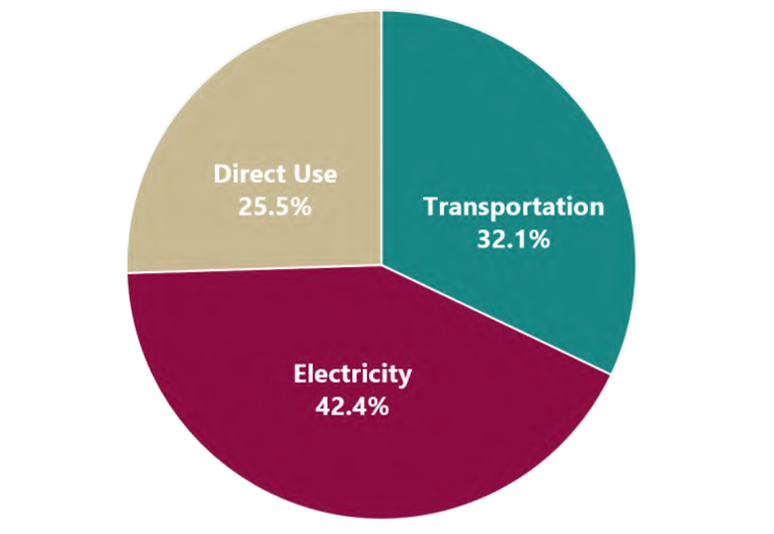Energy Use in Oregon
Consumption by Source
Oregon relies on energy from a variety of resources. We import energy like transportation fuels, natural gas, propane, and other fuels. We use electricity from both in- and out-of-state sources—including coal, natural gas, nuclear, hydropower, wind, and other renewable resources. For this introduction to Oregon’s energy use, the report sorts energy into three main categories: Electricity, Direct Use Fuels, and Transportation.
Consumption by Sector
Energy consumption is also tracked by how it is used among four main end-use sectors: Residential, Commercial, Transportation, and Industrial. In Oregon in 2018, those four sectors combined consumed 1,015 trillion Btu of energy, not including waste energy.
direct use fuels
What We Use and Where it Comes From
In 2018, Oregon used 251.5 trillion Btu of direct use fuels to cook, heat buildings, and support commercial and industrial processes. Direct use fuels make up about 26 percent of the total energy consumption in Oregon. Direct use fuels include fuels that are used at the site in the residential, commercial, and industrial sectors. These do not include fuels used to generate electricity or support the transportation sector.
Natural Gas Consumption by Sector
Commercial Sector | 31 trillion Btu
Residential Sector | 46 trillion Btu
Industrial Sector | 58 trillion Btu
Energy Efficiency
Energy efficiency plays a critical role in our state. It is the second largest resource in Oregon after hydropower, and Oregon has consistently met increased demand for electricity by implementing energy efficiency strategies. The Northwest Power & Conservation Council reports that since 1978, the Pacific Northwest has produced about 7,000 average megawatts (aMW) of savings through efficiency programs and improvements. That’s more electricity than the whole state of Oregon uses in a year.
While energy efficiency is not “consumed” like other resources, it is the second largest resource available in Oregon after hydropower. Efforts to increase energy efficiency effectively reduce overall energy consumption. Historically, Oregon has consistently met increased demand for electricity by implementing energy efficiency strategies.
9th
Oregon’s 2019 rank among U.S. states for energy efficiency by the American Council for an Energy Efficient Economy.
13
Years in a row that Oregon has landed in the top 10 most energy efficient states.










